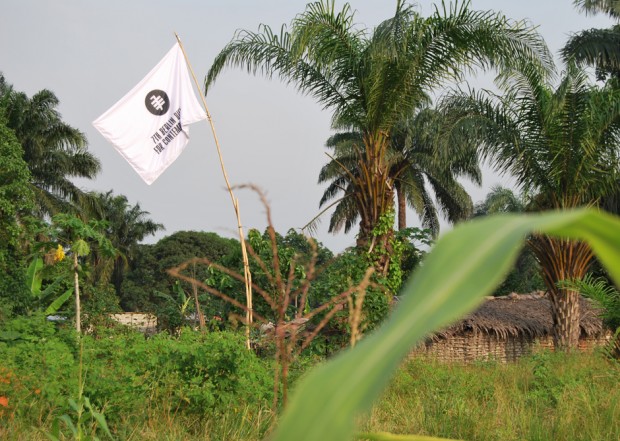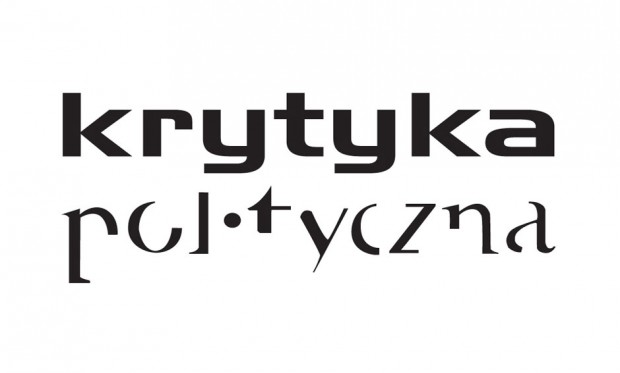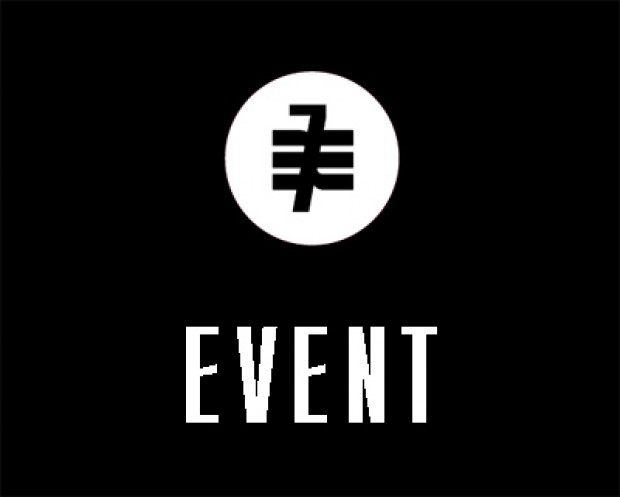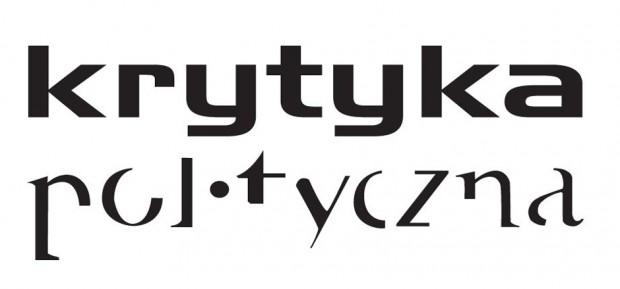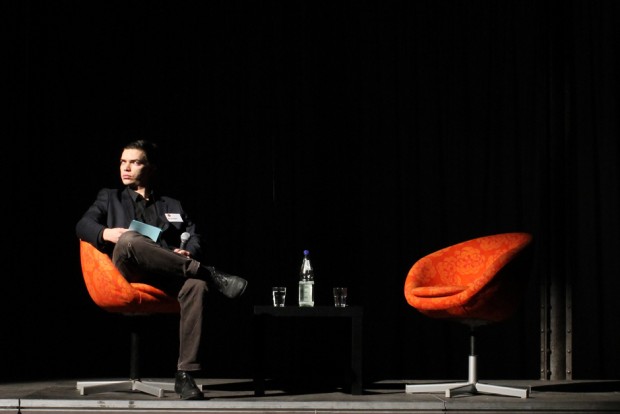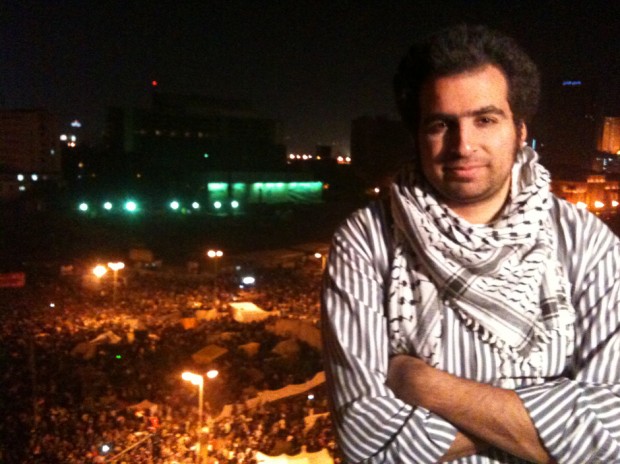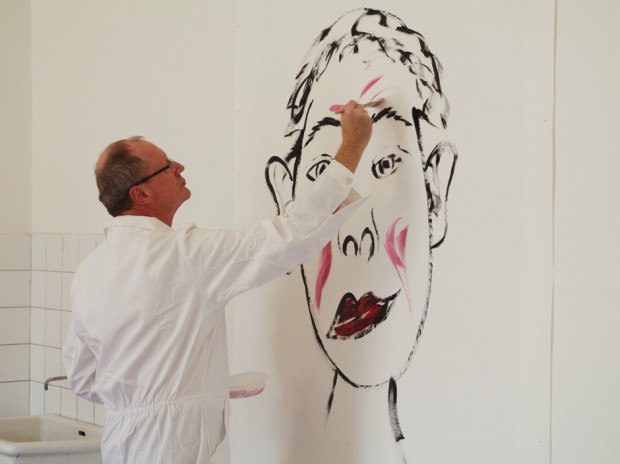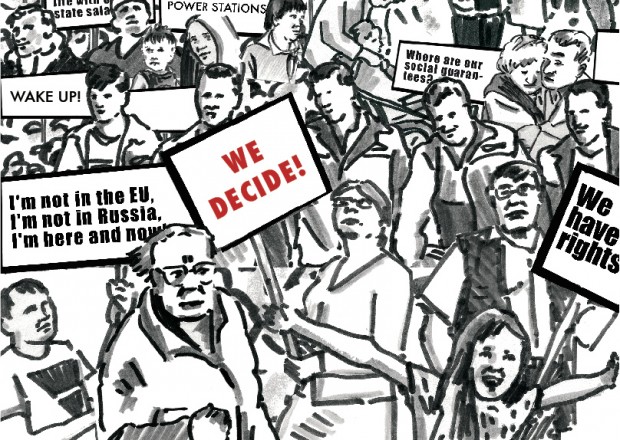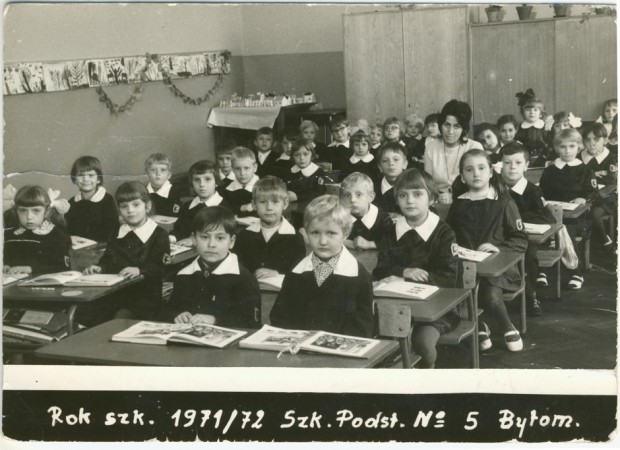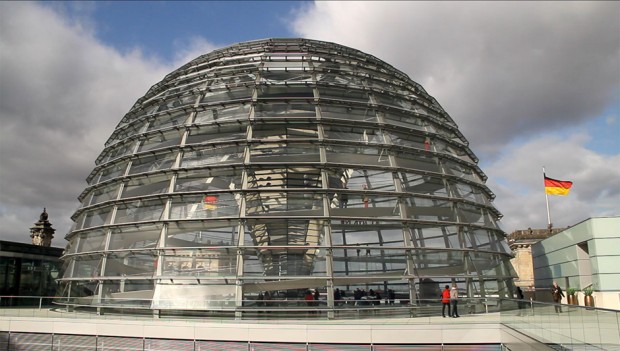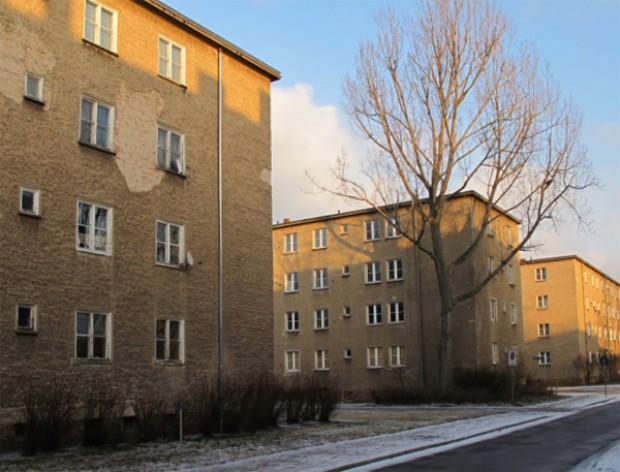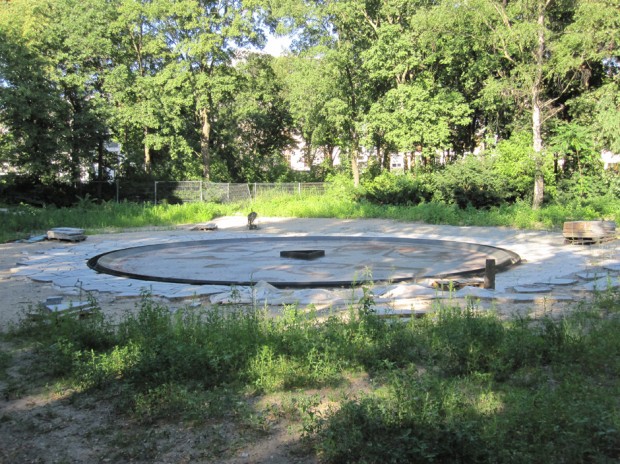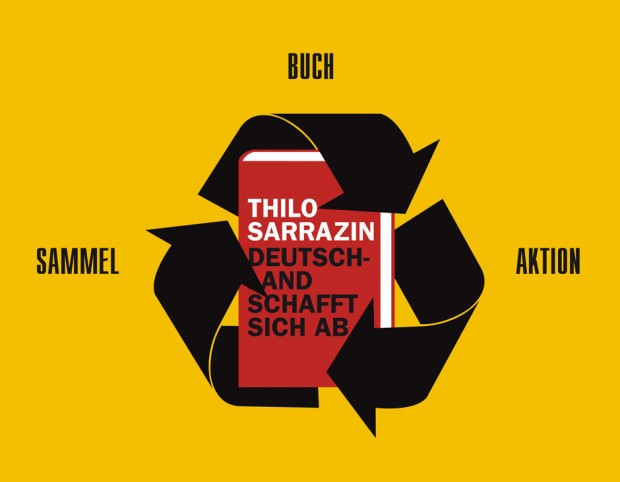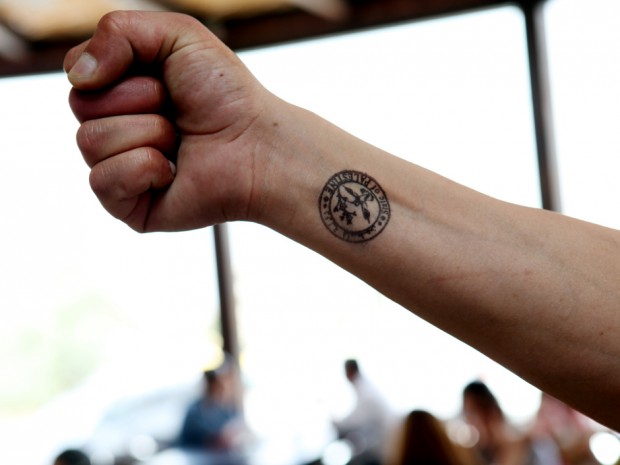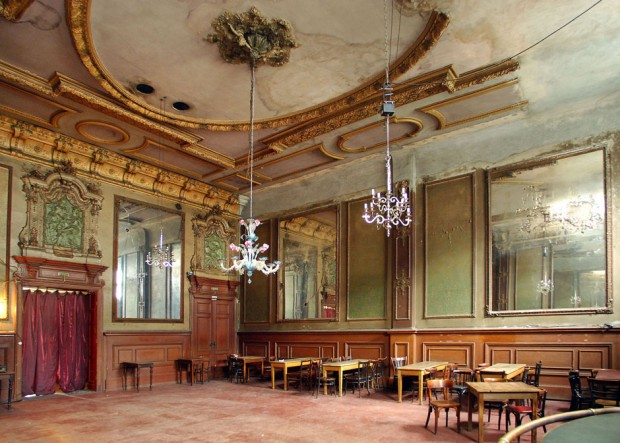













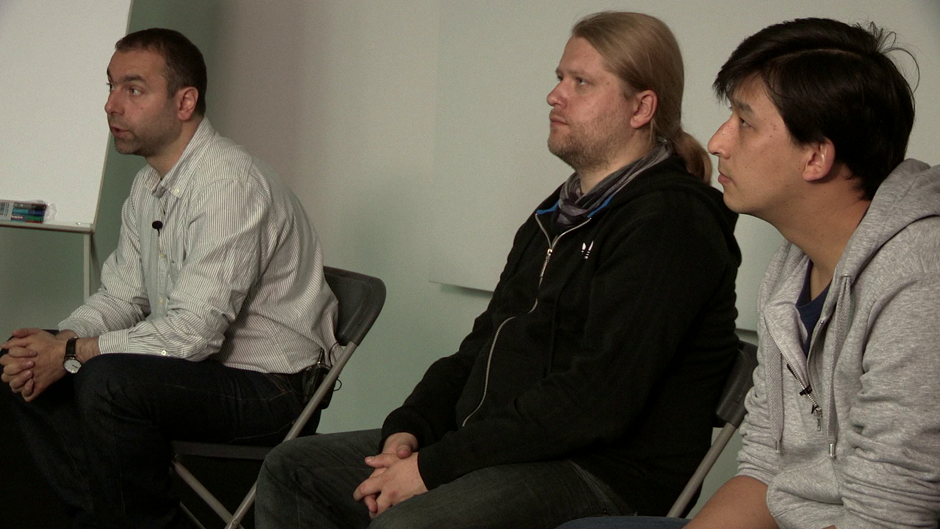
THE 7TH BERLIN BIENNALE––MORE DISCUSSIONS THAN EVER BEFORE
The Berlin Biennale for Contemporary Art has become a format providing a space for curatorial concepts beyond the mainstream production of contemporary art and culture. By choosing the artist Artur Żmijewski as the curator of the 7th Berlin Biennale, the Berlin Biennale once again demonstrated itself as a space for action and experimentation. Żmijewski and his pick of associated curators, Voina and Joanna Warsza, were particularly interested in strengthening the social impact of art and artists in order to manifest their responsibility towards the processes of social change. With more than 120,000 visitors, it was at twelve sites in Berlin and in Eisenhüttenstadt that the 7th Berlin Biennale negotiated art as a tool for social transformation by presenting a range of attempts of influencing politics directly.
For the first time in its history, everyone could visit the Berlin Biennale free of charge—a novelty that helped to reach audiences who normally do not respond to art institutions. Many visitors used the chance to visit the 7th Berlin Biennale more than once, hence following its process-based development. A newspaper informed about important issues around the 7th Berlin Biennale and offered texts on the participating artists and projects.
Already before its opening, the 7th Berlin Biennale generated a broader media interest than any previous edition. More than 1,000 articles in the daily news and specialized press reported on the event more extensively than ever before. In correspondence with the curatorial demand, the 7th Berlin Biennale’s content was no longer solely negotiated in the art field—the remarkable resonance to it exceeded the usual specialized publications and comprised not only national (Tagesschau) but also international press coverage such as Al-Jazeera and CNN.
The aim for direct political influence led to the process-based character of the 7th Berlin Biennale. While it did not begin with the mere installation of artworks in the gallery space, it will also not end by simply shutting the doors and cleaning everything up. It was months before the official opening on April 26, 2012 that one of the projects had already started: Martin Zet’s campaign to drop off Thilo Sarrazin’s best-seller Deutschland schafft sich abat so-called collection points all over Germany triggered a heated public debate that, instead of focusing on the racist content of the best-seller itself, protested wildly against the alleged intent of a book burning.
Correspondingly, the processes that this year’s Berlin Biennale initiated are far from completed with the closure of the event on July 1, 2012. In the following months a number of solidarity partners are going to continue with a series of actions, such as in the context of the upcoming steirischer herbst or the Swiss Institute in Rome. In addition, there are projects that were started as part of the 7th Berlin Biennale but will continue beyond it. Both the documentation of the exhibition and its projects and the discussions around it will continue to be accessible on the Berlin Biennale website. The newspaper Self # governing by Marina Naprushkina communicates scenarios of an alternative future to the citizens of Belarus. In the course of the 7th Berlin Biennale its first edition was distributed all over Europe as well as secretly to hundreds of homes in Belarus. It remains to be seen which impulses and changes Naprushkina’s drawings will initiate.
The project Berlin-Birkenau is a similar situation, for it will have an effect on the landscape of Berlin over the next decades. Łukasz Surowiec displaced several hundreds of birches from the environment of the former concentration camp Auschwitz-Birkenau to the landscape of Berlin. Now, these trees grow as living, decentralized monuments in schoolyards, parks and private spaces such as gardens and balconies. A further example of the flexible framework, which is needed for this type of exhibition, is the Peace Wall by Macedonian artist Nada Prlja. The wall at the southern end of Friedrichstraße highlighted the obvious, yet rarely pronounced processes of social segregation. The artist went to the site and discussed with business people, local residents, district politicians and the media. Although an application of urgency by the district council Friedrichshain-Kreuzberg to take down the wall was rejected, Prlja ultimately conceded to an early dismantling of the Peace Wall. Likewise the wall might have led to collectivizing the neighborhood and articulating own demands. In a similar way as regarding Martin Zet, with this project the Berlin Biennale entered the unstable territory of public debate by making a provocative statement—a risk whose results one could hardly foresee or control.
The 7th Berlin Biennale had an impact on district politics and the landscape of the city, on debates about collective memory and even on the executive board of one of the largest arms manufacturers in Germany. In 2011 the Federal Security Council confirmed the sale of tanks to Saudi-Arabia, which since March 2011 has been directly involved in the destruction of the Arab Spring. The group of art activists, Center for Political Beauty, used a website and billboards in Berlin-Mitte to post a wanted-call aiming for the arrest of the proprietors who cannot be sued for their dealings. In the course of this initiative one of the members of the executive board publicly denounced the trade with Saudi-Arabia upon which he was dismissed from the executive board.
In addition to Self # governing by Marina Naprushkina, Paweł Althamer’s collective performance Sunbeam was a direct response to the problem of participation in Belarus. Althamer mobilized 250 people who wore golden suits and marched at dawn towards the government palace in Minsk, a city in which it can be an illegal assembly if some friends happen to accidentally meet in the street. The journey of an oversized key sculpture from the refugee camp Aida near Bethlehem to the 7th Berlin Biennale provided an occasion to address the marginalization of the Palestinian narrative within the German public. With the passport and postal stamps for Palestine that Khaled Jarrar distributes worldwide as part of his project State of Palestine, the artist suggests the existence of a hitherto utopian state while at the same time transcending stable national aspirations.
Among the numerous discussions of recent years about the relationship between art and social responsibility, Artur Żmijewski’s Berlin Biennale represents a decisive practical step forward, not least also in terms of addressing the kind of self-deception that “critical” art is subjected to. For where does critical art really make an impact? Does it change the regional grievances it points out, or does it matter rather in the western centers where it is not only shown, but economically profitable? The Institute for Human Activities, which was co-founded by the artist Renzo Martens, attempts to turn the tables by displacing art production to places where gentrification would actually be desirable. A program of workshops and stipends on a plantation in the Congo wants to encourage local residents to benefit from the global art market by producing their own artworks. The Institute launched its five-year plan of activities with a seminar conducted as part of the 7th Berlin Biennale.
These were just a few concrete examples among the many other thought-provoking 7th Berlin Biennale projects. The Jewish Renaissance Movement in Poland (JRMiP), initiated by Israeli-Dutch artist Yael Bartana, calls for a return of more than 3 million Jews to Poland, opening up questions about issues of co-existence both regarding Europe and Israel and the Middle East. Held at the Hebbel am Ufer (HAU 1), the First International Congress of the JRMiP developed a concrete platform and demands for the movement. The New World Summit by Dutch artist Jonas Staal was another contribution to the culture of political debate. Organized at Sophiensaele, this event brought together political and legal representatives of organizations marked on international terrorist lists. Discussing the undemocratic methods with which democracies exclude certain interests from their systems of representation, the alternative “parliament” assessed possibilities for introducing a radical form of democracy in Europe.
Political engagement is always connected to the problem of social responsibility. Theater that Acts was developed in cooperation with the Hebbel am Ufer and one of its performances, Illumination, by the theater group Krétakör around Hungarian director Árpád Schilling, pledged for understanding actors as political people. The actors of Krétakör see themselves as active members of society who transcend “façade art” (Marcin Śliwa in the reader Forget Fear).
As part of our contemporary society it is particularly the Occupy movements (started in 2011 with M15 and Occupy Wall Street) that represent the demand for social empowerment and participation on a global scale in a media savvy manner. Throughout the duration of the 7th Berlin Biennale, representatives from these different international groups practiced their forms of protest and strategies of involvement on the ground floor of KW. While the institution initially only offered the space, over the course of the exhibition this partnership grew into the desire not only to address the visitors of the exhibition as members of society, but also to transform the institution as a mediator between art and society into a “horizontal” structure––an example of the process-based and self-critical methods with which Artur Żmijewski and his associated curators made pivotal contributions to contemporary discussions around exhibition production.
The 7th Berlin Biennale did not pursue the type of curatorial concept that communicates a particular idea through a physical arrangement of artworks in a space. Rather it was the question how art can allow citizens to influence reality and foster critical attitudes in society. Both the activists from the movements as well as the participating artists tried to position themselves in relation to concrete political and social concerns in order to contribute to situating art within the field of contemporary politics. At several moments during the 7th Berlin Biennale it became apparent how uncomfortable both art’s debate with itself and its confrontation with political reality can be. For an attitude of artistic and political responsibility is always accompanied by skepticism, disagreement, risk, confrontation, and possible failure. The 7th Berlin Biennale prompted us to leave behind our feelings of discomfort and fear of confrontations and change in order to face the challenge of social transformation.
The Curator of the 7th Berlin Biennale for Contemporary Art
Artur Żmijewski
Artur Żmijewski invited following guests to participate in the 7th Berlin Biennale:
Associated curator
Joanna Warsza
Associated curators
Oleg Vorotnikov (a.k.a. Vor), Natalya Sokol (a.k.a. Kozljonok or Koza), Leonid Nikolajew (a.k.a. Leo the Fucknut) and Kasper Nienagliadny Sokol from Voina
GRAPHIC DESIGN
BUREAU Mario Lombardo
Artists of the 7th Berlin Biennale
a
- Aida Youth Centre
- Paweł Althamer
- Burak Arikan
b
- Charlotte Bank
- Anna Baranowski / Luise Schröder
- Yael Bartana & the Jewish Renaissance Movement in Poland (JRMiP)
- Brimboria Institut
- BUREAU Mario Lombardo
c
- Lou Cantor
d
- Karina Dzieweczyńska
f
- Femen
- Filmpiraten
- Foundation Flight, Expulsion, Reconciliation
g
- Michał Górczyński
h
- Zafeiris Haitidis
i
- Institute for Human Activities
j
- Khaled Jarrar
- Joseph Beuys Theater & Teatr.Doc
k
- Andreas Kaernbach
- Kartenrecht
- Łukasz Konopa
- Ludwig Peter Kowalski
- Krétakör
- Krytyka Polityczna
l
- Bernd Langer
m
- Teresa Margolles
- Maciej Mielecki
- Mobinil
- Antanas Mockus
- Mosireen
n
- Marina Naprushkina
p
- Hermann Joachim Pagels
- Mirosław Patecki
- Pixadores
- Nada Prlja
- Public Movement
r
- Oleksiy Radynski
- Tomáš Rafa
- Joanna Rajkowska
- David Reeb
- Stefan Rusu
- David Rych
s
- Pit Schultz
- Jonas Staal
- Łukasz Surowiec
z
- Martin Zet
- Artur Żmijewski




